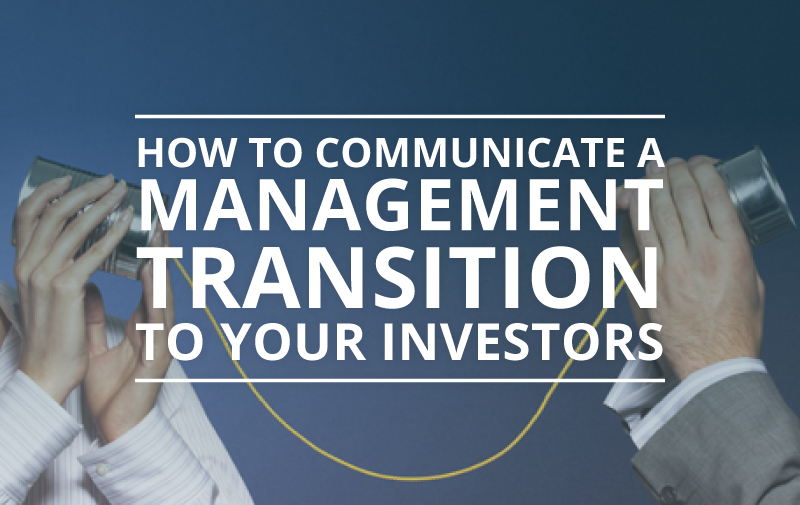Management changes, while inevitable for most companies, can be stressful for both employees and investors. Communicating the change and plan of action well is essential to managing how employees and investors will receive the news. Management changes are not always planned, leaving some companies without the advantage of foresight; but having a thoughtful and strategic communication plan is still imperative.
Here are a few things to remember before your company changes CEOs, no matter the reason.
1. | Have a plan. If you know your CEO is preparing to step down, you cannot claim ignorance when the day comes. The Board should already have a comprehensive succession program in place. This will enable them to select a successor well in advance, either hiring internally or bringing the individual on in a steppingstone position, such as COO. Trust us: it will be much easier to communicate a succession plan if you actually have one in place.
2. | Have a crisis plan. On the other end of the spectrum, your Board and IR team should have a crisis plan in place, in the event that your CEO leaves unexpectedly. The plan should include who would step in on an interim basis, that person’s qualifications, the Board’s search process and a timeline for when that process will be completed.
3. | Make a good first impression. By selecting a new hire well before the handoff date, you allow the CEO-to-be to build rapport with the investment community before stepping into the corner office. This provides the opportunity for informal, low-pressure introductions at investment conferences and non-deal investor meetings and participation in quarterly conference calls. An external candidate will benefit from having time to learn about the company before having to demonstrate that knowledge to investors. The grace period given to new CEOs during transitions is unforgivingly brief, so extra time behind the scenes will pay off handsomely once the transition is made public.
In a crisis hiring, the company will need to introduce both the interim CEO and permanent CEO. The introduction of the interim CEO should reassure investors that the Board is confident this is the right person to oversee the business until the permanent CEO is named. The announcement of the permanent CEO seeks to reassure investors that the Board made the right decision. Either way, meeting face to face with the top investors and covering sell-side analysts will be crucial to the success of this transition. A shadow period will be improbable, so the new CEO should be prepared for a crash course in corporate culture and operations in order to make the best impression in public interactions.
4. | Communicate the plan. Once the succession plan is in motion, get the word out to investors and sell-side analysts as early in the process as possible. The more notice you provide, the more orderly the transition will appear. And by effectively communicating the CEO’s transition, you will garner support for the successor and alleviate investor uncertainty. Ideally, the company will make a series of announcements via press release, beginning with the hiring of the CEO-apparent, assuming this is an external candidate.
We could argue that communicating the plan is even more important in a crisis scenario – but also more difficult. In many cases, the Board will have very limited information about the timing for naming a replacement. You do have an opportunity to sell the Board’s vision for the next CEO, though. Use the announcement of the current CEO’s exit as a de facto commercial for the position. List the qualifications and experience you are looking for and how these tie into the Board’s strategic vision for the company.
Once the new CEO is in place, the window of opportunity to demonstrate progress will be small. Take advantage by clearly outlining the new corporate strategy or explicitly affirming the existing one. Consider having an investor day within the first few quarters of the CEO’s appointment to communicate the strategy in greater detail and generate support from investors.
Conclusion
Whichever type of transition you have, the goal for your communications strategy should be to present a thoughtful, orderly transition and to establish positive investor relationships with your new CEO. By walking through these steps, you will be in a solid position to give the new chief executive a running start.
Debbie Kaster, Managing Director


Leave a Reply